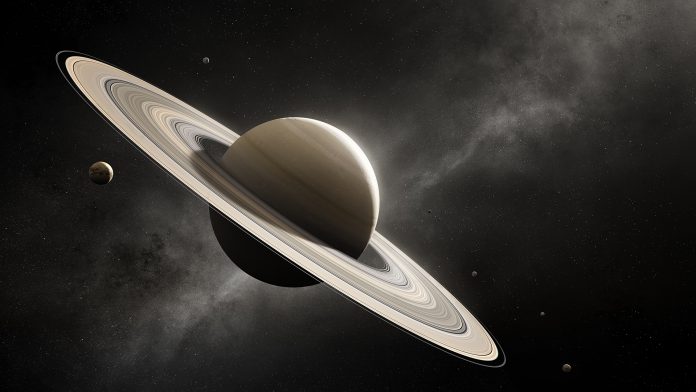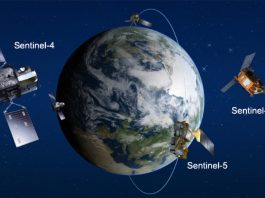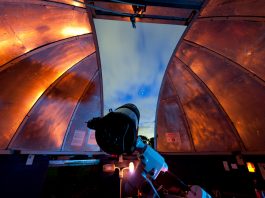Gerrick Lindberg, a chemical physicist at Northern Arizona University, USA, is collaborating on a NASA-funded study of Saturn’s largest moon, Titan, and the liquid on its surface.
According to NASA, Titan is the only body in our solar system besides Earth with liquid on its surface. Chemical elements behave very differently there in the extremely cold and dense atmosphere of Titan, which reaches temperatures of below minus 300 degrees Fahrenheit. H2O, forms Titan’s bedrock while methane acts much like water does on Earth—it flows, evaporates, and rains down on Titan to form rivers, lakes, and seas.
Through a $666,000 grant, NASA is supporting a collaborative research project between Northern Arizona University and the Lowell Observatory. Northern Arizona University will receive $349,000 over three years to conduct experiments that examine the behaviour of various chemical interactions.
Co-principal investigator on the project, Gerrick Lindberg, is an associate professor in Northern Arizona University’s Department of Applied Physics and Materials Science. He is leading the effort to understand Titan’s lakes from the molecular scale; work that will directly inform that of principal investigator Jennifer Hanley, a planetary scientist at Lowell. Hanley is conducting an examination of the environmental conditions on Titan in the Astrophysical Ice Laboratory on campus, a shared facility between NAU and the observatory.
The team will examine how molecules react in a world that has an atmosphere 1.5 times denser than Earth’s and intense pressure at lake depths of 600 feet. They will measure phase changes such as freezing, along with solubilities, using Raman spectroscopy, which determines vibrational modes of molecules.
Lindberg said: “Our cryogenic Astrophysical Ice Laboratory setup enables us to study materials down to minus 300 degrees through imaging. Samples will include mixtures of methane, ethane and nitrogen, along with trace species such as propane, ethylene and acetylene.” Hanley added: “We want to understand how similar Titan is to early Earth and what is happening there today that is changing the surface.”
Experiments will be performed in a thin cylinder that has a window on two sides for observational purposes. The scientists will be able to capture pictures and videos.
Lindberg said: “With the simulations, we can make a movie of the molecules bouncing around. We can identify the molecules in the liquid and see how they coordinate with each other, how fast they are moving, whether they evaporate or not and see how different materials might separate under various conditions. We are interested to learn which molecules will drive the changes that we see—how they behave at the interface between liquid and gas and how they freeze, evaporate and interact with light as it hits the surface.”
The research is expected to be directly applicable to NASA’s Solar System Workings objectives of characterising and understanding the chemical, mineralogical and physical features of planetary surfaces and fluid inventories that interact with the surface. The knowledge gained through this research will contribute to the Dragonfly mission, which is expected to land on Titan in 2034 and whose goal is to advance our search for the building blocks of life.









